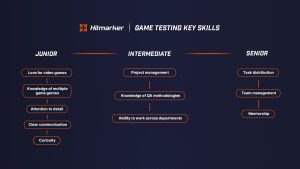
As technology continues to advance, the gaming industry has seen significant growth in recent years. With the rise of mobile gaming and in-game purchases, developers are constantly exploring new ways to monetize their games. However, finding the right balance between generating revenue and providing a enjoyable gaming experience for players can be a challenge. In this article, we will explore the various monetization models in games and discuss how developers can strike the perfect balance.
Free-to-Play Model
The free-to-play model has become increasingly popular in the gaming industry. Players are able to download and play the game for free, but have the option to purchase in-game items, cosmetics, or other virtual goods with real money. This model is attractive to players as they can try out the game without any upfront cost, but developers can still generate revenue through microtransactions.
However, there is a fine line between offering valuable in-game purchases and implementing pay-to-win mechanics. Developers must ensure that the in-game purchases are optional and do not give paying players a significant advantage over non-paying players. By striking the right balance, developers can create a fair and enjoyable gaming experience for all players.
Subscription Model
Another popular monetization model in games is the subscription model. Players pay a recurring fee, usually on a monthly basis, to access the game and its content. This model is commonly seen in massively multiplayer online games (MMOs) and mobile gaming services. Subscriptions can offer players exclusive content, benefits, and discounts that non-subscribers do not have access to.
Developers must ensure that the subscription fee is justified by the content and benefits offered to players. Players should feel that they are getting value for their money and that the subscription enhances their gaming experience. By providing quality content and regularly updating the game, developers can encourage players to continue subscribing.
Advertisement Model
The advertisement model is another way for developers to monetize their games. Players are shown advertisements either before, during, or after playing the game. Developers can earn revenue based on the number of views, clicks, or interactions with the advertisements. This model is often used in free-to-play games as a way to generate additional income.
However, developers must be careful not to overwhelm players with advertisements, as this can detract from the gaming experience. Ads should be strategically placed and non-intrusive to ensure that players continue to enjoy the game. By finding the right balance between advertisements and gameplay, developers can effectively monetize their games without alienating players.
Hybrid Model
Many developers are opting for a hybrid monetization model, combining elements of the free-to-play, subscription, and advertisement models. This allows developers to cater to different player preferences and maximize revenue streams. For example, a game may offer a free-to-play option with in-game purchases, as well as a subscription service for additional content and benefits.
By offering a variety of monetization options, developers can appeal to a wider audience and provide players with choice. However, it is crucial for developers to carefully balance these models to ensure that they do not overwhelm players with too many monetization options. By listening to player feedback and analyzing player behavior, developers can adjust their monetization strategies to find the right balance.
Conclusion
Monetization models play a crucial role in the success of games in the modern gaming industry. Developers must carefully consider the needs and preferences of their players when implementing monetization strategies. By finding the right balance between generating revenue and providing an enjoyable gaming experience, developers can create a sustainable and profitable game that keeps players engaged and satisfied.



